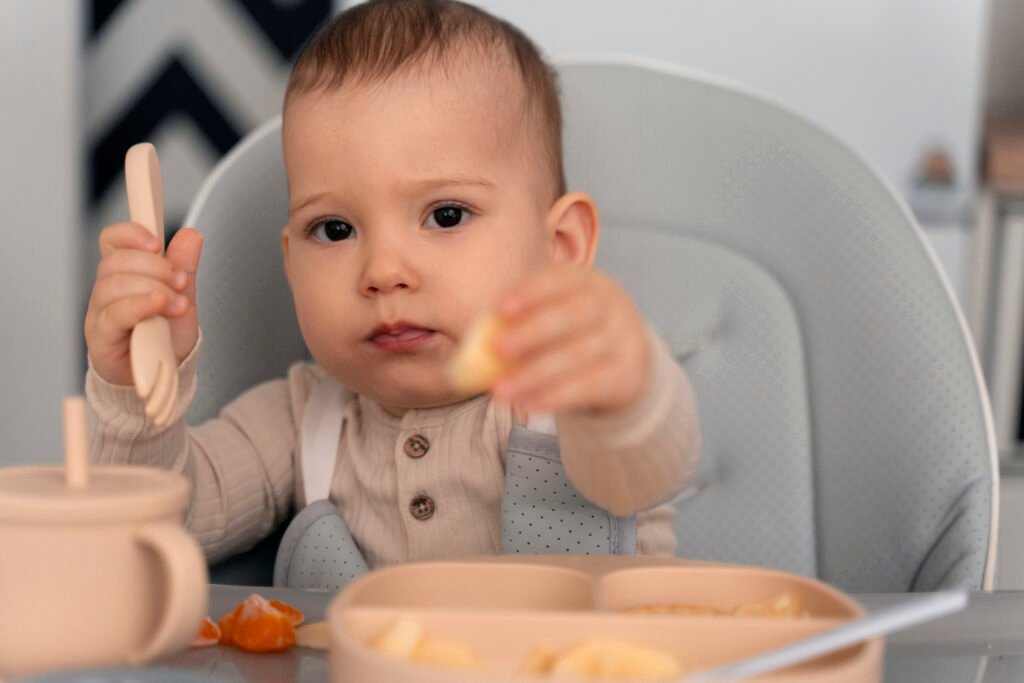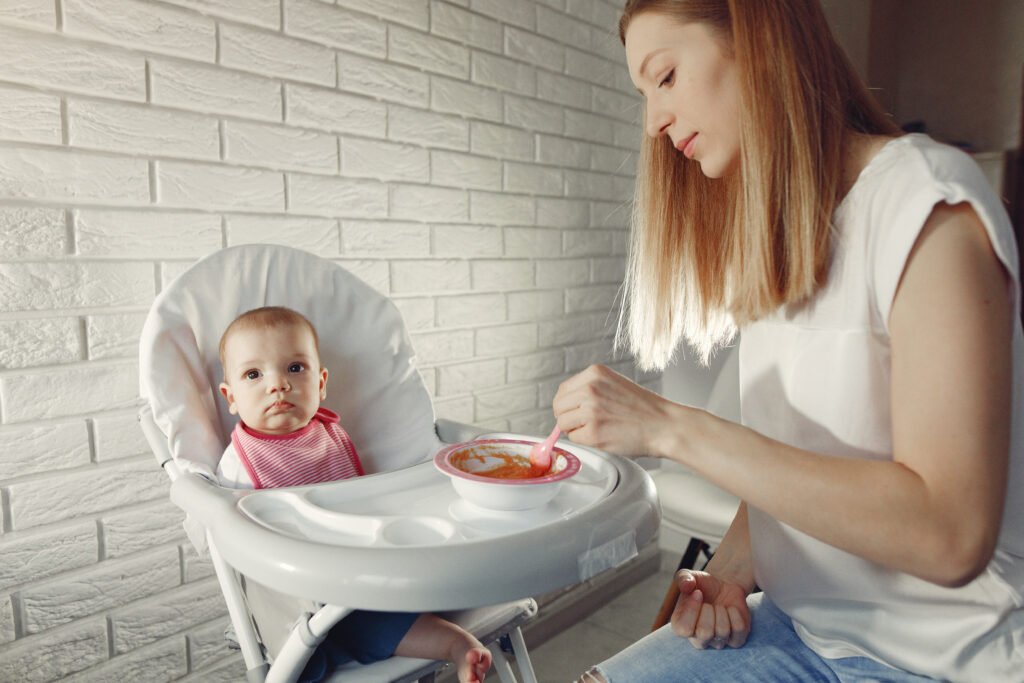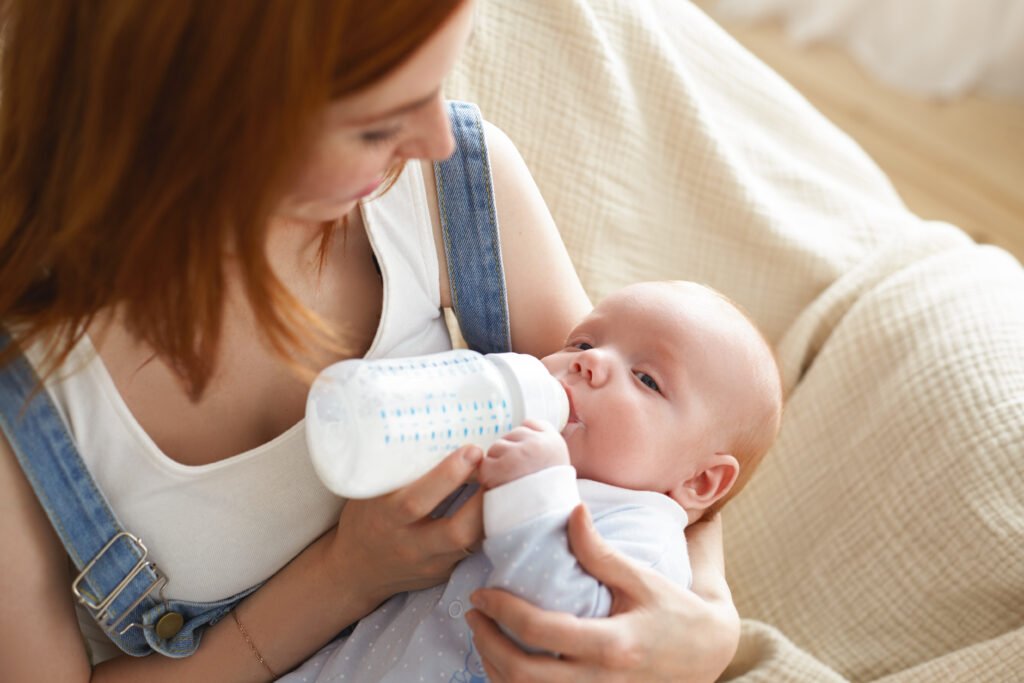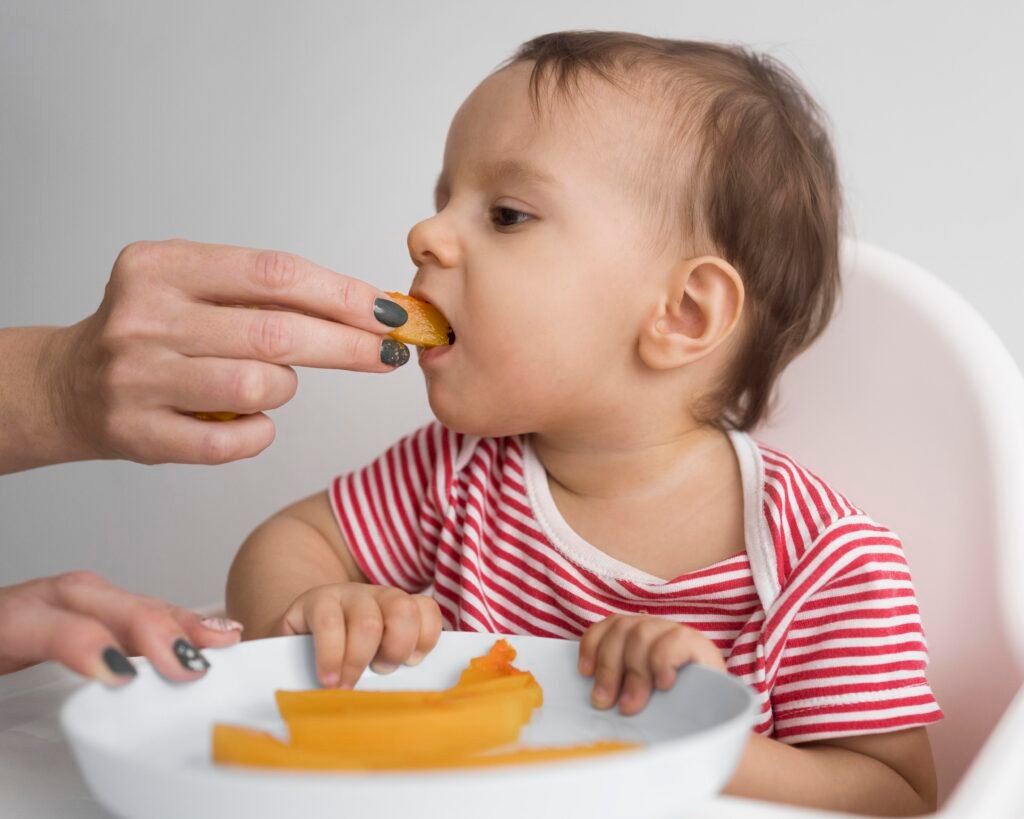
Starting solids is one of the biggest milestones in your baby’s first year—but let’s be honest, it can also feel overwhelming. Social media is full of conflicting opinions: Should you spoon-feed purees? Go fully baby-led? What if your baby chokes? What if they don’t eat enough?
The truth? There’s no one-size-fits-all approach.
In fact, blending both baby-led and parent-led (spoon-feeding) weaning offers a gentle, flexible, and balanced way to introduce solids—one that honours your baby’s development and your instincts as a parent.
Let’s take the pressure off and look at the benefits of both styles, plus how you can confidently combine them to suit your family.

Baby-led weaning (BLW) skips purées and goes straight to soft, manageable finger foods—think sticks of avocado, steamed broccoli, toast soldiers, or even a lamb chop to gnaw on. Babies feed themselves, explore textures, and decide what and how much to eat. It’s all about autonomy and exploration. Along the way, they’re also building important fine motor skills, hand-eye coordination, and oral muscle development—all of which support speech and chewing later on.
The catch? It can be tricky to know how much your baby’s actually consuming, and some may struggle to meet calorie needs early on—especially if they’re still figuring things out.
Spoon-feeding, or parent-led weaning, usually starts with smooth purées and gradually increases texture over time. It offers more control for parents, especially when it comes to ensuring nutritional variety, introducing iron-rich foods early, and watching for allergies. It’s also great for babies who may be slower to pick up self-feeding or have a stronger gag reflex.
You don’t have to choose one over the other. I encourage parents to combine both methods.
Use spoons for nutrition, calories, and iron-rich foods—and offer finger foods for exploration, practice, and fun. One approach meets your baby’s nourishment needs; the other nurtures their independence.
There’s no right or wrong. Just connection, curiosity, and confidence.

How Do I Know If My Baby Is Ready?
Most babies are ready between 5–6 months, but some show signs as early as 4 months. Look for:
If your baby pushes food out with their tongue, that’s their way of saying, “Not quite ready yet!” Give it a week and try again.

How Much Should I Feed Them?
Start small: just one tablespoon once a day is perfect. Don’t increase until your baby has had a bowel movement. Once they’re digesting well, you can add a second meal in week two, and a third as the weeks progress.
Let your baby guide you—but go gently. Their digestive system is learning to

Is My Baby Eating Too Much?
Babies are usually great at regulating hunger. If they’re turning away or clamping their lips, they’re likely full. If they seem insatiable, pause for 5 minutes—sometimes it takes a moment for their brain to register fullness. Use common sense, tune into your baby’s cues, and trust that you know them best.

Solids Before or After Milk Feeds?
I suggest separating milk and solids completely, rather than feeding one right after the other. Try this rhythm:
By around 10 months, babies often drop to 3 milk feeds a day—morning, mid-afternoon, and bedtime—while continuing with three meals and optional snacks.

What Foods Should I Start With?
Skip the supermarket sachets and reach for real, whole foods:
Start simple, then introduce combinations gradually. The goal is variety and familiarity—include foods your family regularly eats.Fun fact: Babies are more likely to accept and enjoy foods they’ve been exposed to 21+ times before 12–18 months. Keep offering even if they reject it at first.

Should I Offer Water?
Yes! Once solids begin, water can be offered with meals.
Keep it to sips—just enough to rinse and quench, without replacing milk or food.

What About Allergy Foods?
Introduce common allergens—eggs, peanuts, cow’s milk, tree nuts, soy, sesame, wheat, shellfish—early and one at a time.
If your baby reacts, stop and speak to your doctor. If your family has a history of allergies, proceed with extra care.

Babies don’t just eat food—they squish it, smear it, study it, and sometimes wear it.
This mess is learning.
Let them explore with their hands, face, and mouth. Try not to wipe faces or tidy up until the end of the meal. Play is part of the process.

Choosing a blend of baby-led and spoon-fed weaning lets you meet your baby’s needs while honouring your own parenting style. You’re not doing it “wrong” if you offer a mix of purées and finger food. You’re being responsive.
There’s beauty in flexibility—and confidence grows when we trust our instincts.
Check out my K.I.S.S. (Keep It Simple Solids) Program—a practical, low-stress guide to starting solids that shows you how to combine spoon-fed and baby-led approaches with confidence. Explore the guide here
If you’re feeling unsure about how to start—or continue—your solids journey, you’re not alone. Every baby is different, and sometimes a little personalised guidance can make all the difference. I offer gentle, realistic support tailored to your baby’s development, your feeding goals, and your family rhythm.
Book a one-on-one consultation with me here and let’s take the stress out of solids, together.

You deserve a smoother, calmer routine—and now’s the perfect time to grab the tools that help.
From settling support to sleep saviours, we’re giving you up to 50% off some of our most-loved essentials